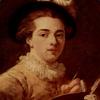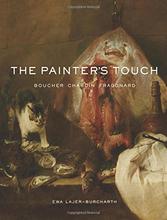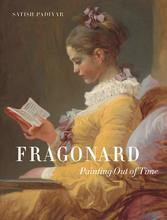More about The Visit to the Nursery
- All
- Info
- Shop

Contributor
You could say that Fragonard's idyllic A Visit to the Nursery gives good PR for the writings of Jean-Jacques Rousseau, which made a huge splash in French society.
Rousseau confronted us with the loony possibility that we are born with a fundamentally good nature, and that it is society, not just the demons lurking within us, that ruins the party. These ideas were instrumental in making Europeans wonder if child-rearing might be as worthwhile as fighting each other with muskets and swords, and they eventually laid the foundation for the notion that domestic work is actual, valuable work. Unfortunately, it seems that Rousseau may not have walked the walk in raising his own children, but Fragonard's painting capitalizes on his ideas in a brilliant way.
At the same time, this painting shows the emergence of a certain group of people who the French call the bourgeoisie, who you may know as the "Bad & Boujee," to quote Migos. The image of the bourgeoisie in literature usually shows people enamored of nice material things, and who are separated from the rural, extended-family lifestyle symbolized by the elderly Disney-esque woman, almost a caricature, sitting in the shadows in this painting.
About five years before he composed this work, Fragonard married Marie-Anne Gérard, whose sister, Marguerite, lived with the couple. Marguerite Gérard referred to Fragonard as a father figure, and received her only training from him, winning success as a painter. Her Le premier pas de l'enfance (The first step of infancy) shows a baby surrounded by family, including the elderly woman on the left-hand side, as in A Visit to the Nursery. Some authors have argued that Gérard borrowed this composition from her brother-in-law, who produced A Visit to the Nursery approximately the same year that Marguerite moved in with him and Marie-Anne.
Just before finishing A Visit to the Nursery, Fragonard had been painting a series for the interior decoration of the residence of the dancer Marie-Madeleine Guimard. They couldn't agree on a price, and Guimard gave the commission to the young Jacques-Louis David instead. Relieved to be free of the job, Fragonard made friends with David.
If you've ever noticed the resemblance between slow R&B songs and church music, you may also have noticed that, similarly, Fragonard's A Visit to the Nursery and The Happy Family resemble the famous Christian scenes of the manger, only in a secular context.
Sources
- Baetjer, Katharine. French Paintings in The Metropolitan Museum of Art from the Early Eighteenth Century through the Revolution. New York: The Met, 2019.
- Baillio, Joseph. French Paintings of the Fifteenth Through the Eighteenth Century. Washington, D.C.: National Gallery of Art, 2009.
- Marks, Claude. From the Sketchbooks of the Great Artists. New York: T.Y. Crowell, 1972.
- Percival, Melissa. Fragonard and the Fantasy Figure: Painting the Imagination. London: Routledge, 2017.
- Richler, Martha. A World of Art: National Gallery of Art, Washington. London: Scala, 1997.
- Rosenberg, Pierre. Fragonard. New York: The Met, 1988.
- Walker, Lesley H. A Mother's Love: Crafting Feminine Virtue in Enlightenment France. Lewisburg, PA: Bucknell University Press, 2008.
Featured Content
Here is what Wikipedia says about The Visit to the Nursery
The Visit to the Nursery is an oil-on-canvas painting by French artist Jean-Honoré Fragonard, created c. 1775, now held in the National Gallery of Art in Washington, D.C., which it entered in 1946 as part of the Samuel H. Kress collection. It was previously identified with a work auctioned in a 1780 sale of Fragonard's major client Jean François Leroy de Senneville (1715 – 1784), a fermier général, and then re-auctioned four years later, but a work more closely matching that work's description was rediscovered around 2009 in a collection in Estonia.
Check out the full Wikipedia article about The Visit to the Nursery














